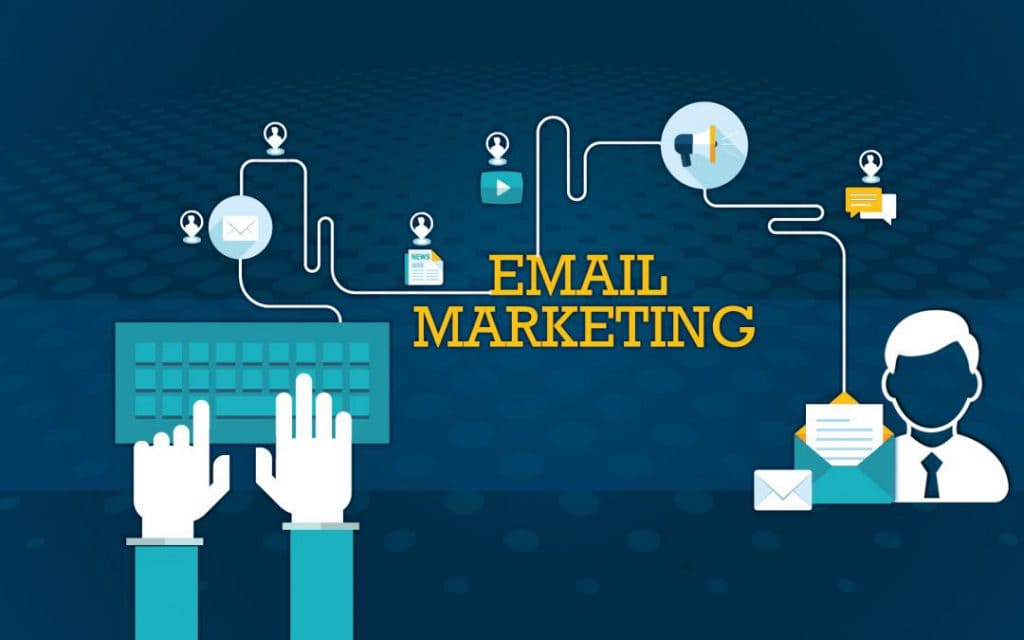Email marketing remains one of the most powerful tools for building long-term customer relationships. According to a 2023 study published in the Journal of Marketing Channels, email marketing continues to deliver the highest ROI of all digital marketing efforts, up to 4200%. However, achieving these kinds of results requires more than just sending promotions. It hinges on two crucial components: making a strong first impression and consistently engaging your audience in meaningful ways. Let’s break down the research-backed strategies that can help your company thrive through email marketing.

Nail Your First Impression: The Welcome Email Series
The moment someone subscribes to your list is when their curiosity and attention are at their highest. Creating a strong welcome email series is critical for making a memorable first impression. Experian’s Email Benchmark Report found that welcome emails generate four times higher open rates and five times higher click-through rates than regular promotional emails. Your first email should immediately thank the subscriber, deliver any promised assets (such as a discount code or lead magnet), and clearly set expectations for future communications.
The second and third emails in your series should introduce your brand’s story and values. Research by Escalas (2004) in the Journal of Consumer Research shows that brand storytelling builds stronger emotional connections and significantly increases trust and loyalty. Sharing your company’s origin story, mission, and the “why” behind your work helps humanize your brand and creates a stronger relational bond from the beginning.

Focus on Relationship Over Sales
While it can be tempting to push products or services right away, modern consumers are more responsive to brands that build genuine relationships. A study published in Harvard Business Review demonstrated that emotionally connected customers have a 306% higher lifetime value compared to satisfied customers. In other words, people don’t just want to be sold to, they want to feel aligned with a brand’s values and mission.
Consistently offering valuable content (educational resources, tips, inspiration, or even entertaining stories) shows subscribers that you prioritize their needs and experiences over transactions. By doing this, companies position themselves as trusted advisors and companions in their customers’ lives, rather than merely vendors. This approach fosters loyalty and sets the stage for deeper engagement over time.

Personalization is Key
Today’s customers expect personalization, and they quickly disengage when brands don’t deliver it. A 2022 article in Marketing Science found that personalized emails result in a 29% higher open rate and a 41% higher click-through rate than non-personalized ones. Personalization involves much more than simply inserting a first name into the subject line.
Modern email platforms allow companies to segment audiences based on interests, behaviour, location, purchase history, and more. If a subscriber downloads a guide on sustainable living, following up with eco-friendly product suggestions shows attentiveness and builds relevancy. According to McKinsey’s 2022 Next in Personalization Report, companies that personalize their marketing efforts grow revenue 40% faster than those that don’t, further emphasizing the financial and relational value of thoughtful customization.

Keep the Conversation Two-Way
Effective email marketing is not a monologue, it’s a conversation. Encouraging subscribers to interact transforms passive readers into active community members. McKinsey & Company research shows that customer engagement through feedback, polls, and direct replies can increase customer lifetime value by 20%.
Ask your audience for their opinions, invite them to share feedback, and create opportunities for them to express their preferences. Simple calls-to-action like “Reply and let us know your favourite!” or quick surveys can go a long way in making subscribers feel heard. When customers sense that a brand values their voice, it enhances emotional attachment and strengthens loyalty, two key predictors of long-term success.

Stay Consistent and Stay Interesting
While sending emails consistently is important for building familiarity, it is equally important to avoid becoming repetitive. Consistency helps establish reliability — a vital component of trust, according to a study published in the Journal of Consumer Research. However, if emails feel formulaic or uninspired, subscribers may disengage, no matter how regular the schedule.
To keep your audience engaged, vary the content and format of your emails. Mix educational articles, behind-the-scenes videos, customer spotlights, and time-sensitive offers to create dynamic and engaging touchpoints. Additionally, anchoring your communications to seasonal themes, trending topics, or subscriber milestones (like anniversaries) can further increase relevance and maintain excitement over time.
Final Thoughts
Email marketing is one of the few digital spaces where your brand has permission to connect directly with your audience, no algorithms, no paywalls. But that permission must be earned and re-earned with every message you send. By making a strong first impression through a thoughtful welcome series, building relationships based on value, personalizing communication, encouraging two-way dialogue, and delivering consistent yet fresh content, your company can turn casual subscribers into deeply loyal customers.
In a world where attention is scarce and trust is priceless, your email strategy can, and should, be your most powerful tool for sustainable business growth.
📚 Sources
Escalas, J. E. (2004). Narrative processing: Building consumer connections to brands. Journal of Consumer Research, 31(2), 268–279. https://doi.org/10.1086/422109
Experian. (n.d.). The welcome email report: Benchmark data and analysis. Experian Marketing Services. Retrieved from https://www.experian.com
Harvard Business Review. (2016). The new science of customer emotions. Harvard Business Review. Retrieved from https://hbr.org/2016/11/the-new-science-of-customer-emotions
Marketing Science Institute. (2022). The power of personalized marketing. Marketing Science, 41(3), 478–493. https://doi.org/10.1287/mksc.2022.1350
McKinsey & Company. (2022). The value of getting personalization right—or wrong—is multiplying. Retrieved from https://www.mckinsey.com/business-functions/growth-marketing-and-sales/our-insights/the-value-of-getting-personalization-right-or-wrong-is-multiplying
McKinsey & Company. (2020). How to build an emotional connection with customers. Retrieved from https://www.mckinsey.com
Journal of Consumer Research. (2015). Brand familiarity and trust development: Insights for marketers. Journal of Consumer Research, 42(5), 698–712. https://doi.org/10.1093/jcr/ucv055

